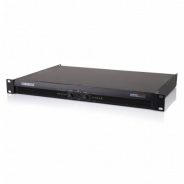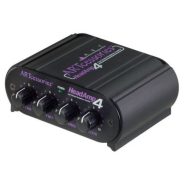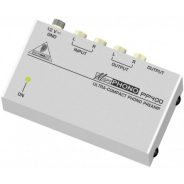Amplifiers
Audio amplifiers are the heart of every sound system, ensuring that the signal coming from a source — such as a DJ mixer, microphone, or musical instrument — reaches the speakers with sufficient power and clarity. There are several types of amplifiers, each designed for a specific purpose.
The most common type is the power amplifier, which takes a low-level audio signal and boosts it to a level strong enough to drive passive loudspeakers. These are widely used in concerts, clubs, and installed sound systems where high volume and reliability are essential.
For smaller events, bars, or conference venues, integrated or mixer amplifiers are often used. These combine a mixing console and a power amplifier in one unit, allowing users to manage inputs and outputs easily without additional equipment — an ideal choice where compactness and simplicity matter.
Headphone amplifiers serve a different role: they provide the right volume and quality for multiple headphones simultaneously, commonly used in studios or recording sessions. Similarly, preamplifiers are essential for microphones and instruments — they raise weak input signals to line level so that mixers and power amps can process them properly.
Modern systems often rely on DSP (digital signal processing) amplifiers, which not only amplify but also include built-in digital processing such as EQ, limiter, crossover, and delay. These are the standard in today’s professional PA systems, allowing precise control over the sound.
Lastly, tube and transistor amplifiers, often used with guitars and basses, remain popular for their warm, characterful tone. Unlike digital precision, they add a pleasing, organic coloration that musicians and audiophiles love.
In summary, every amplifier type serves a unique purpose — from pure power delivery to tone shaping and signal management. Together, they make music sound powerful, dynamic, and alive.






























































